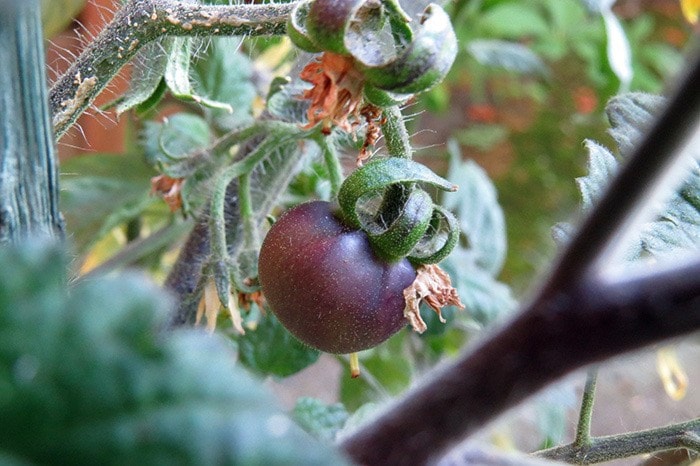Well...I promised more this column about the new tomato plant I am growing this year, the grafted tomato. As I mentioned, I have been reading about these for a few years now.
Grafting tomatoes sounds a little crazy, doesn't it? Imagine slicing through the stem of a young seedling and attaching it to the stem of another seedling. Anyone who handles seedlings knows how risky this can be.
Would you believe the Japanese and Koreans have been grafting vegetables since the 1920s? They started with melons, using the stronger squash varieties as root stock. Their aim was to boost fruit production for greenhouse growing.
Nowadays, growers are also grafting squash, pumpkins, cucumbers, eggplants, peppers...and tomatoes. And they are using machines to do it! Mind-boggling.
As you can imagine, it is an expensive operation. But the benefits include strong growth, as well as a hardiness towards soil-borne diseases (such as early and late blight for tomatoes) and harmful nematodes. Plus increased fruit yield.
With late blight running rampant in our region, a resistant tomato is a godsend. We do love our tomatoes...based on it being one of the top-grown vegetable varieties in the garden.
So what grafted variety did I select? One of the newest in the blue tomato line-up...Indigo Apple. Well, technically, the skin of the fruits will ripen to a deep purple-black colour. (Not really sure where the term "blue" tomato came from.)
The Indigo line began with Indigo Rose coming onto the market in 2012. Indigo Blue Beauty followed with Indigo Blue Berries and Indigo Apple coming available this year. All of these are open-pollinated varieties. Indigo Kumquat is the lone F1 hybrid.
Vegetable breeders at Oregon State University (OSU) embarked on a breeding program to increase the anthocyanin levels in tomatoes as a means of increasing the fruit's antioxidant potential. (Remember: tomatoes are a favourite food crop.) Their aim: a new, healthy food choice in the battle against cancer.
Actually, the very beginnings of this particular breeding began sometime in the 1960s. A couple of breeders cross-pollinated wild species from the Galapagos Islands and Chile with cultivated tomato varieties. While many tomato species contain anthocyanins in their stems and leaves, only some wild species have these flavonoids in their fruits.
By the way...the breeders at OSU are using totally appropriate hybridizing methods. Israeli scientists also used conventional breeding methods in developing their anthocyanin-boosted black tomato, Black Galaxy.
But genetic engineering is not to be left out of this latest attempt to increase human health. British scientists have used gene splicing methods and snapdragon genes to up the anthocyanin levels in their chosen tomato. The colour in their tomato extends beyond the skin and into the fruit. (Tomatoes in the Indigo series are red inside.) So far, potential name considerations lean towards Purple Haze, Forbidden Fruit, or possibly Deep Purple.
The discerning fact I have uncovered is this GM tomato is currently being grown on a farm in Ontario. It is the hope of one the principal breeders, Professor Cathie Martin, the juice made from these Canadian-grown tomatoes will soon make it onto grocery shelves. They will be promoting it as a healthy food choice.
Also disturbing...approval for growing this British-bred GM tomato has not been granted in the UK. According to Professor Martin, "I can't stress enough how enlightened the Canadian regulatory process towards these types of [genetically modified] foods is - it has truly been fantastic." (National Post; January 27, 2014.)
Back to my grafted Indigo Apple tomato plant...assuredly, this variety is non-GMO. And its first tomato has already appeared...before the middle of June! Even in its infancy, it is definitely purple-black in colour. Taste results to follow....
Leslie Cox co-owns Growing Concern Cottage Garden in Black Creek. Her website is at www.duchessofdirt.ca and her column appears every second Thursday in the Record.
